News
Joe Vesey-Byrne
Oct 18, 2016
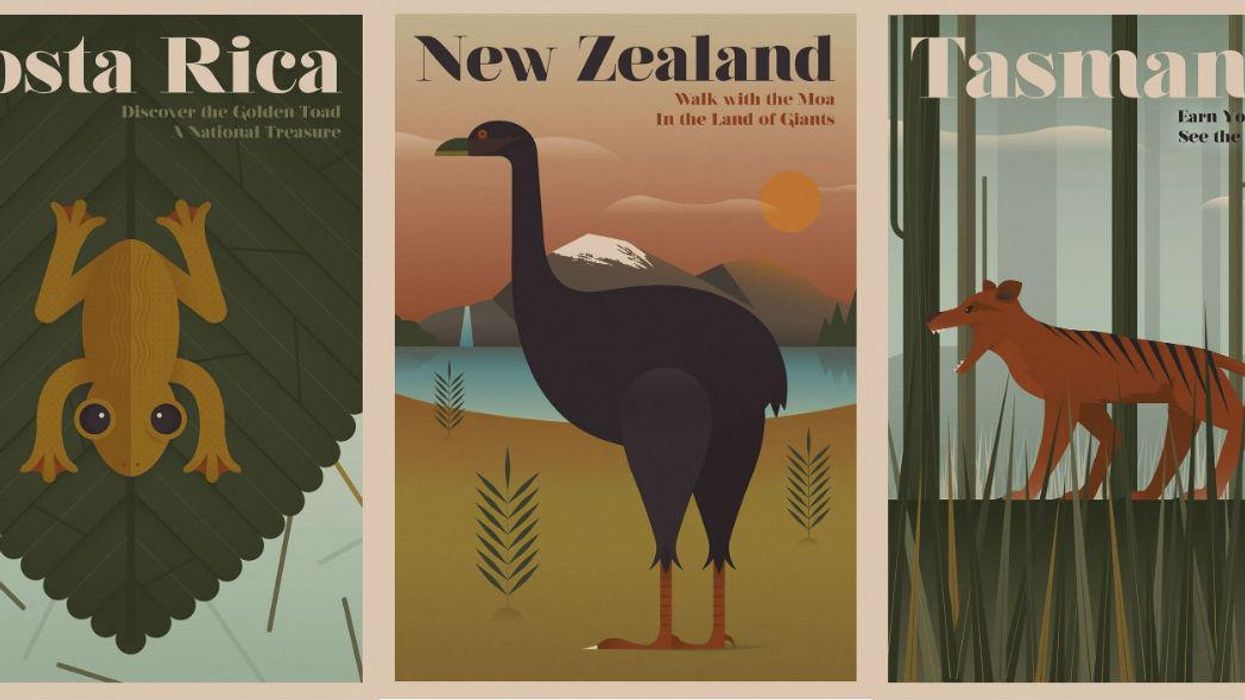
Picture:
Expedia.co.uk
A travel company has commissioned a series of beautiful posters which advertise a country’s wildlife.
Each features an animal as a way of advertising its country of origin.
The catch is, today's visitors will never lay eyes on them. They're extinct.
The campaign by Expedia, called ‘Unknown Tourism’, commemorates the wildlife that has been lost.
Speaking to indy100, a spokesperson for the poster series explained how the idea came about.
We started thinking about the things you can't see any more when you go traveling and realised that a lot of people don't know about the animals once endemic to particular countries - yet this information forms an important part of a country's heritage... The mid-century modern travel poster seemed like the perfect format to present this information, evoking a sense of loss and nostalgia for the past.
Some of the animals that are wrapped up on their country's identity include the Thylacine of Tasmania, which remains part of the country's official insignia, and the Dodo which appears on the coat of arms of Mauritius.
The Giant Galliwasp
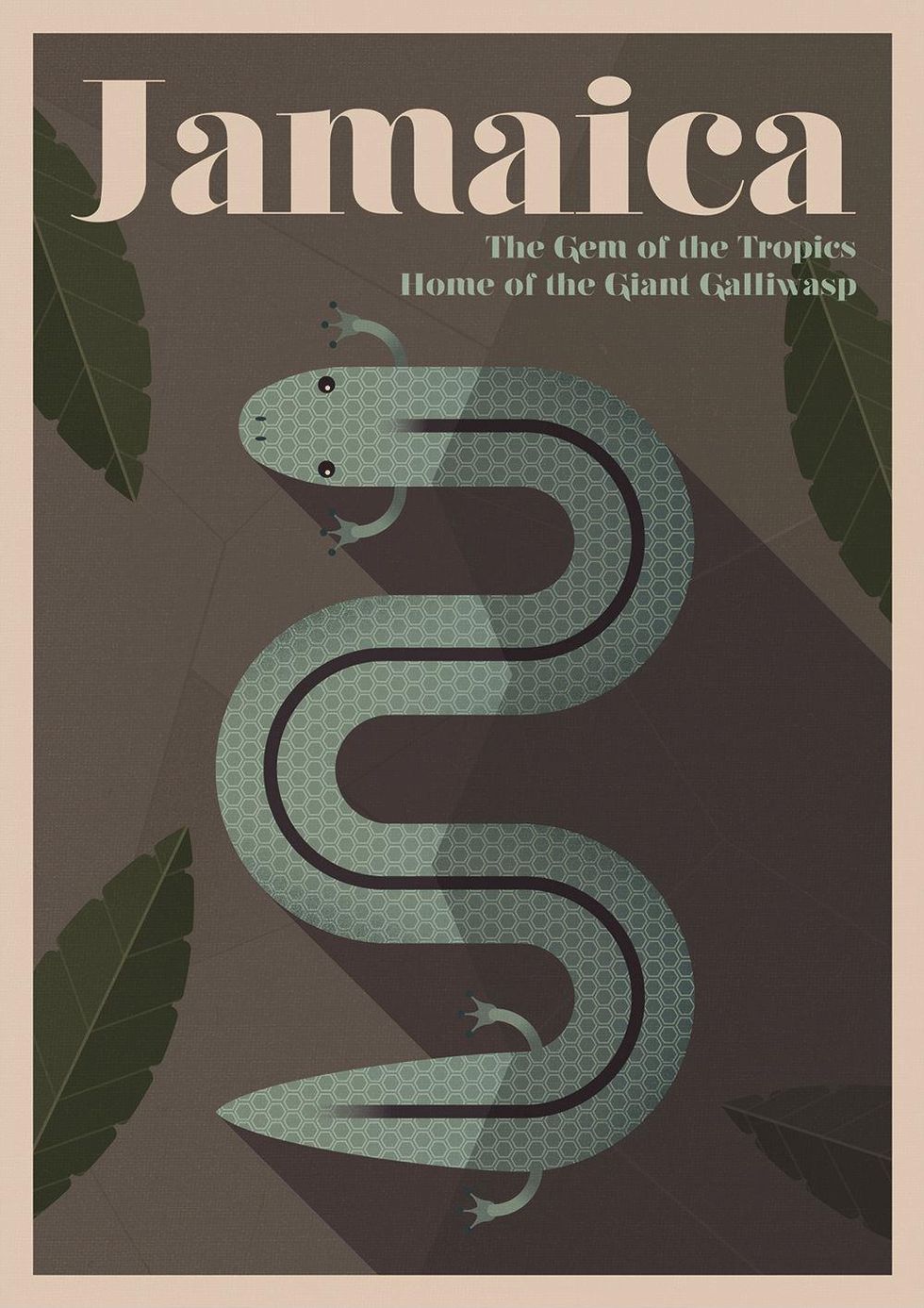
A rather large reptile (sometimes 60 cm in length) the Galliwasp was part of certain voodoo traditions in Jamaica.
The arrival of settlers, along with cats and dogs, upset the balance of the ecosystem on the island.
The last recorded galliwasp was 1840.
The Steller's Sea Cow
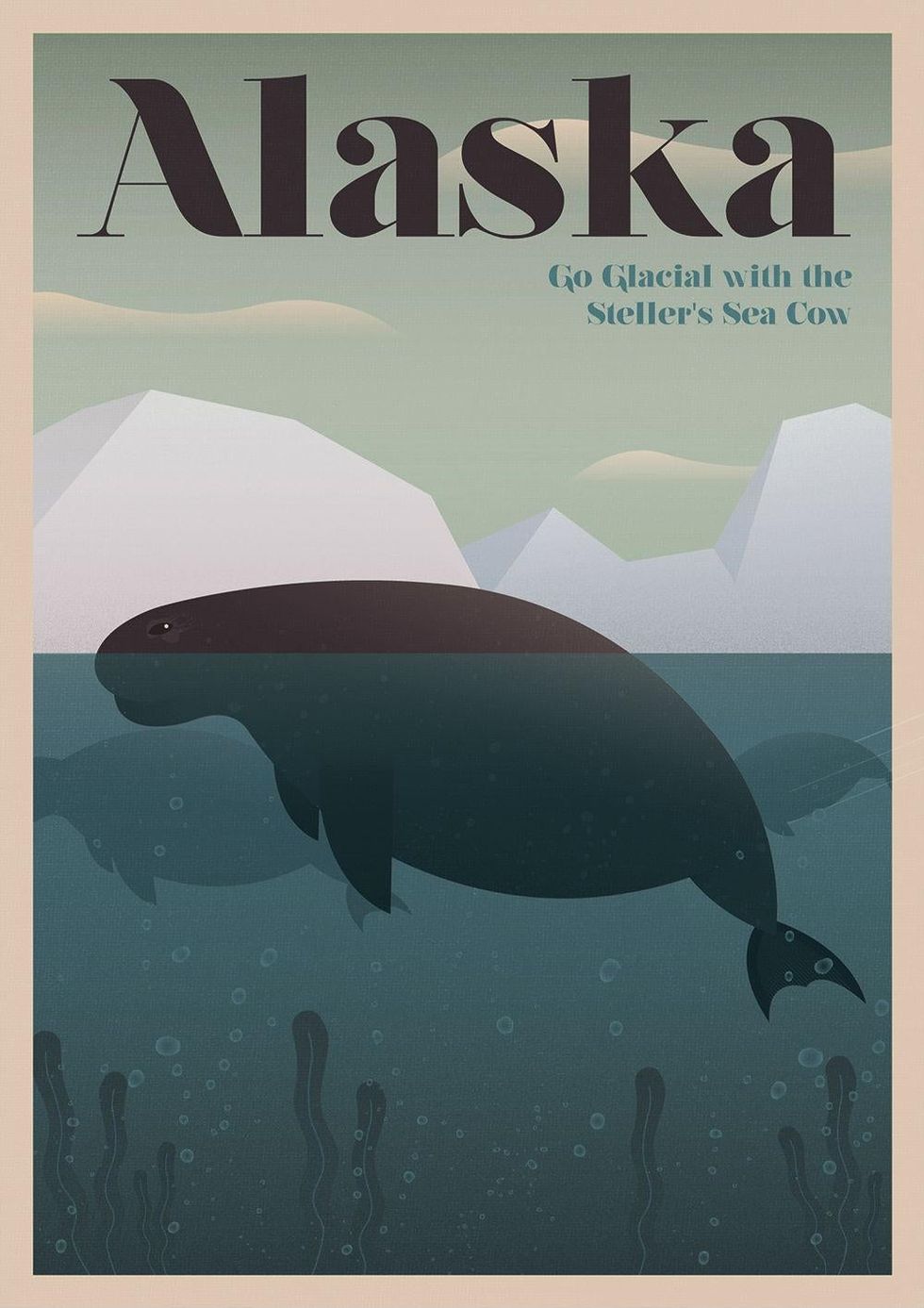
This 'cow of the sea' is named for both its mass (weighing almost 11,000 kg by some counts) and its constant grazing.
The creature was discovered in 1741 by Captain Vitus Bering, after whom the strait and sea between Russia and Alaska is named.
It was studied by the German zoologist Georg Steller, who said the blubber tasted like almond oil (perhaps providing a clue to the sea cow's demise).
Steller's sea cow became extinct in 1768, but its relation the North American manatee lives on.
The Dodo
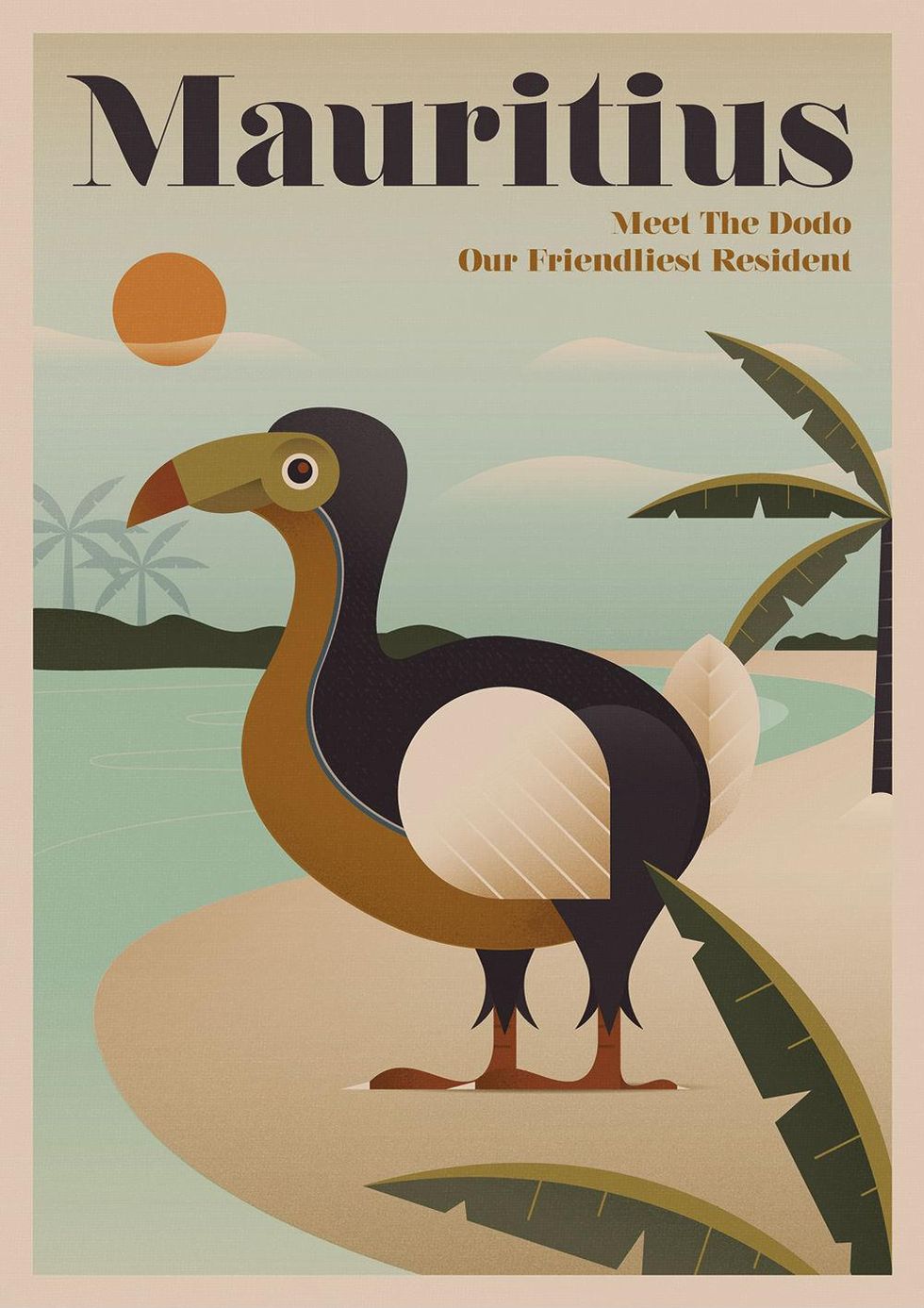
The Dodo is probably the most famous extinct animal on the planet, but it's actually a distant cousin of the very not-extinct common pigeon.
The etymology of the name is unknown, but it could come from the Dutch word 'doddaars' ,meaning 'fat arse', which first appeared in a captain's journal in 1602.
Alternatively it comes from the Portuguese 'doudo' meaning 'simpleton'.
Their extinction is usually attributed to interaction with humans, given Mauritius was uninhabited prior to 1598.
The Thylacine
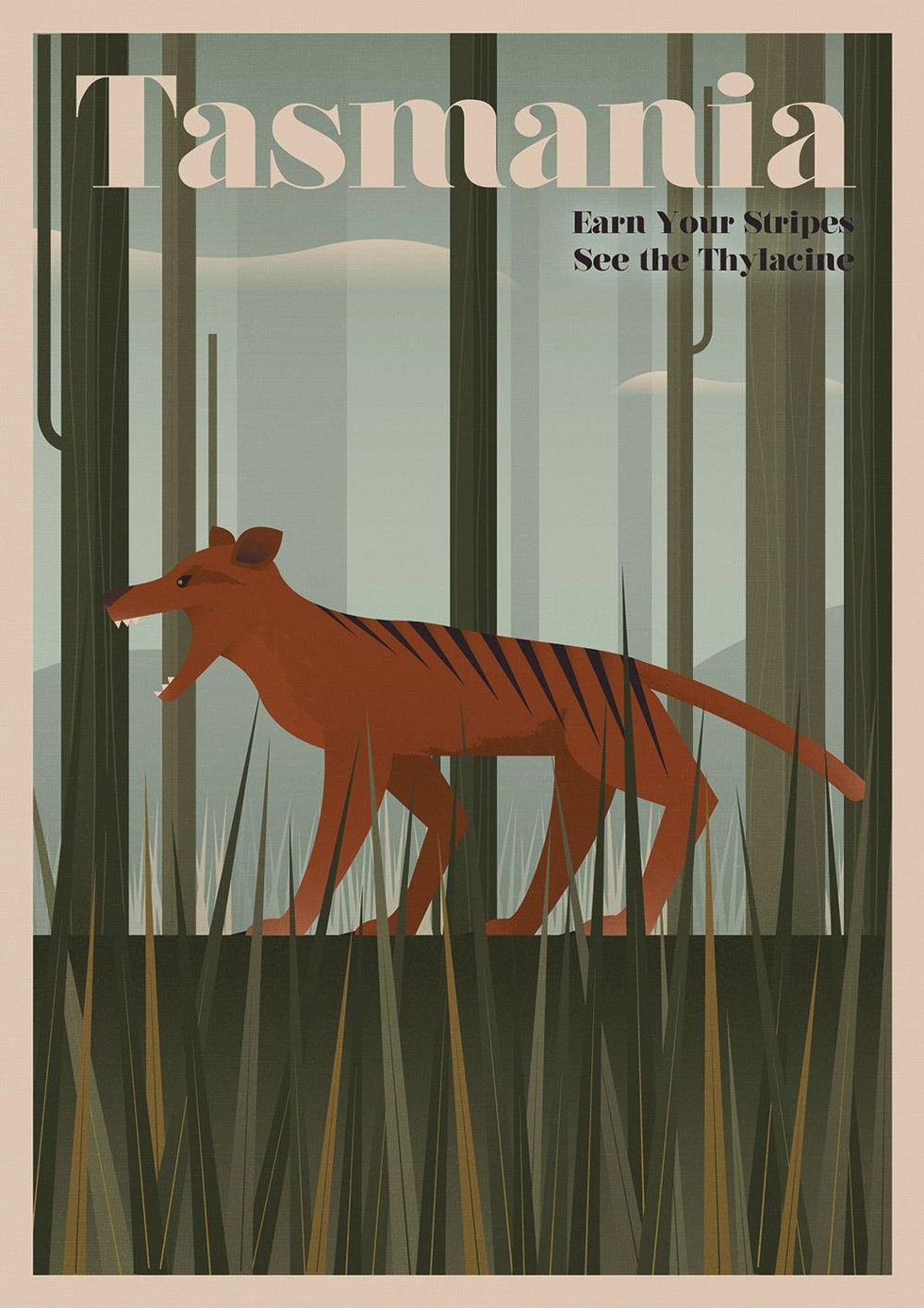
This 'Tasmanian tiger' was in fact a marsupial, one of the largest carnivores of its kind. It had a jaw that could extend to 80 degrees.
Many existed in captivity in zoos as far afield as London and Washington.
Due to hunting of wild thylacines, the last is believed to have died in Beaumaris Zoo, Tasmania in 1936.
The Golden Toad
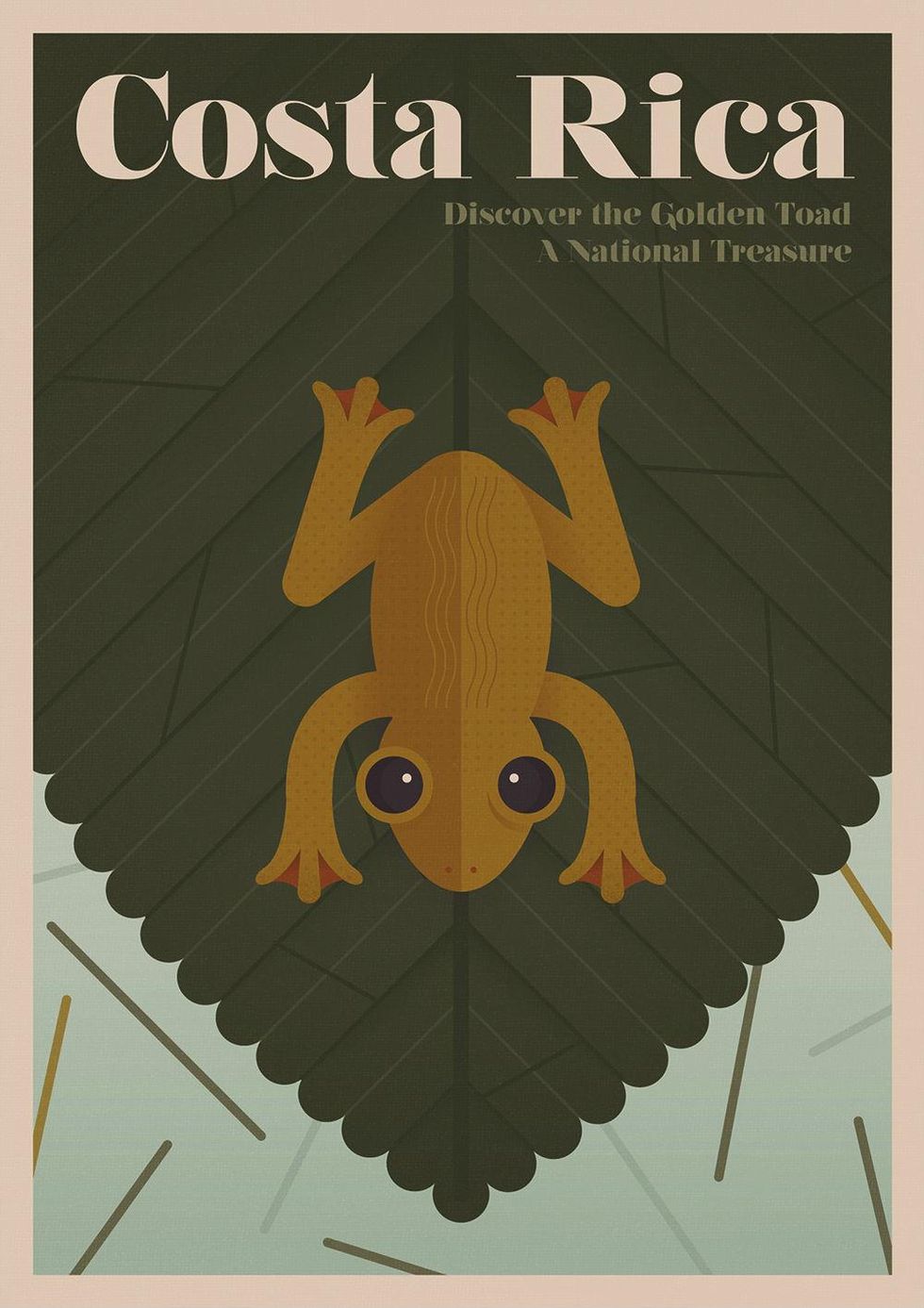
In addition to gold, this same toad could also be found in the high altitudes of the mountains of Costa Rica, coloured orange, white, yellow, red and green.
One of the more recent losses from the animal kingdom, the Golden Toad died out in 1989.
Zoologists attribute this to a reduction in rainfall, depriving the toads of the puddles in which they used to breed.
The Moa
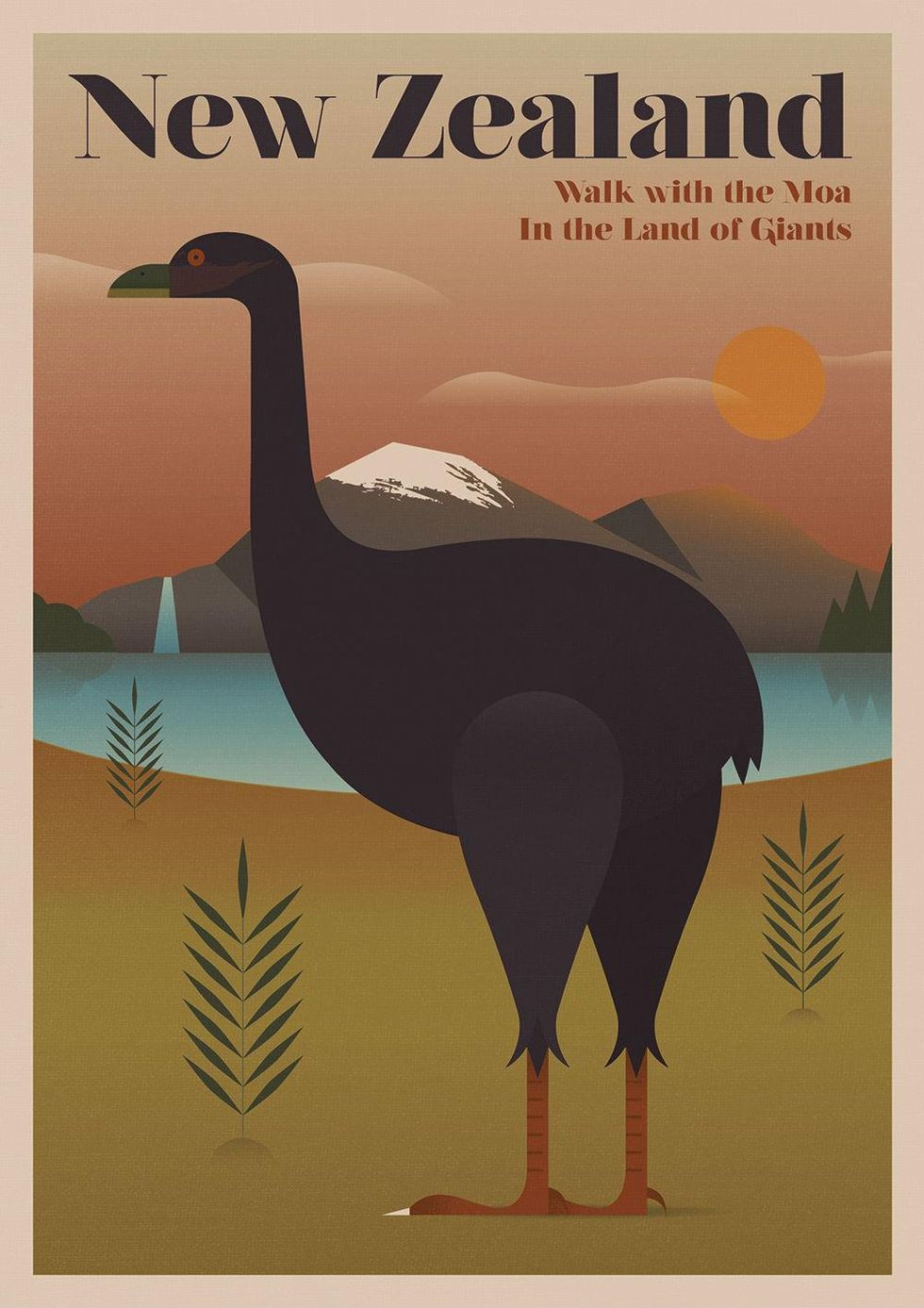
The Moa, standing at 12 feet tall, was an example of the 'island gigantism' that occured in many of New Zealand's creatures, due to their evolution in isolation.
This bird could weigh 230 kg, much bigger than today's ostriches or emus.
It became extinct some point after the arrival of the Māori c1300 AD.
The spokesperson for Expedia explained what they hoped could come from the posters.
We wanted to pay tribute to some of the amazing animals we've lost and are in danger of forgetting. If the posters also spark awareness and get people thinking about the animals that are currently endangered, and in danger of becoming extinct, that can only be a good thing.
The popularity of the designs has prompted requests for prints which Expedia is said to be considering, with the intention of donating proceeds to the World Wide Fund for Nature (WWF).
What creatures will qualify for posters in the next two hundred years?
More: 8 things you didn't know you needed to know about orgasms
Top 100
The Conversation (0)













